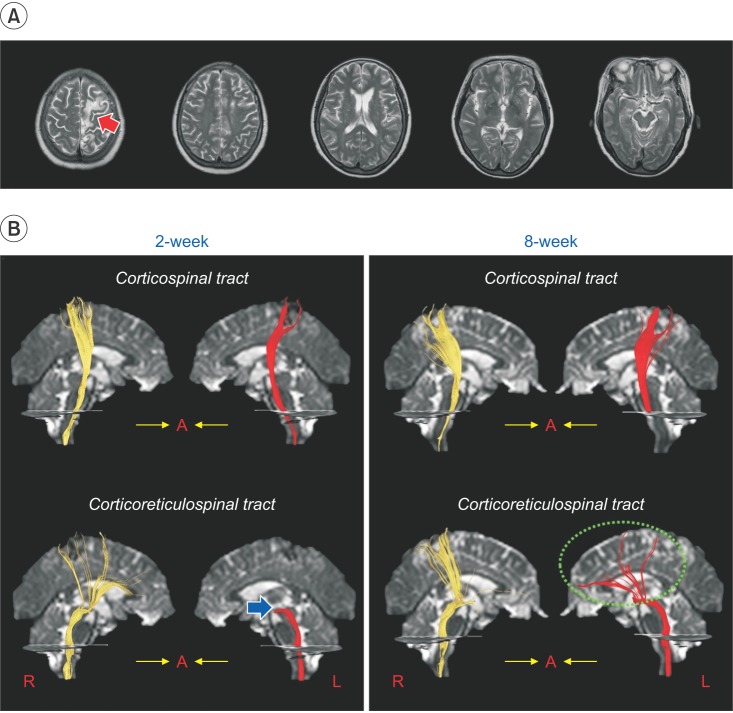Ann Rehabil Med.
2017 Jun;41(3):516-517. 10.5535/arm.2017.41.3.516.
Recovery of an Injured Corticoreticulospinal Tract in a Patient With Cerebral Infarct
- Affiliations
-
- 1Department of Physical Medicine and Rehabilitation, Yeungnam University College of Medicine, Daegu, Korea. soyoung.kwak@daum.net
- KMID: 2389471
- DOI: http://doi.org/10.5535/arm.2017.41.3.516
Abstract
- No abstract available.
MeSH Terms
Figure
Reference
-
1. Yeo SS, Jang SH. Recovery of an injured corticospinal tract and an injured corticoreticular pathway in a patient with intracerebral hemorrhage. NeuroRehabilitation. 2013; 32:305–309. PMID: 23535792.
Article2. Jang SH, Yeo SS. Recovery of an injured corticoreticular pathway via transcallosal fibers in a patient with intracerebral hemorrhage. BMC Neurol. 2014; 14:108. PMID: 24886278.
Article
- Full Text Links
- Actions
-
Cited
- CITED
-
- Close
- Share
- Similar articles
-
- Which Neural Tract Plays a Major Role in Memory Impairment After Multiple Cerebral Infarcts? A Case Report
- Correlation between Body Temperature and Infarct Size and Recovery in the Stroke
- A Case of Middle Cerebral Artery Infarct Developed Immediately After Head Injury
- The Comparison of Videofluoroscopic Findings between the Patients with Lateral Medullary Infarct and Middle Cerebral Artery Territorial Infarct
- Visual recovery demonstrated by functional MRI and diffusion tensor tractography in bilateral occipital lobe infarction


